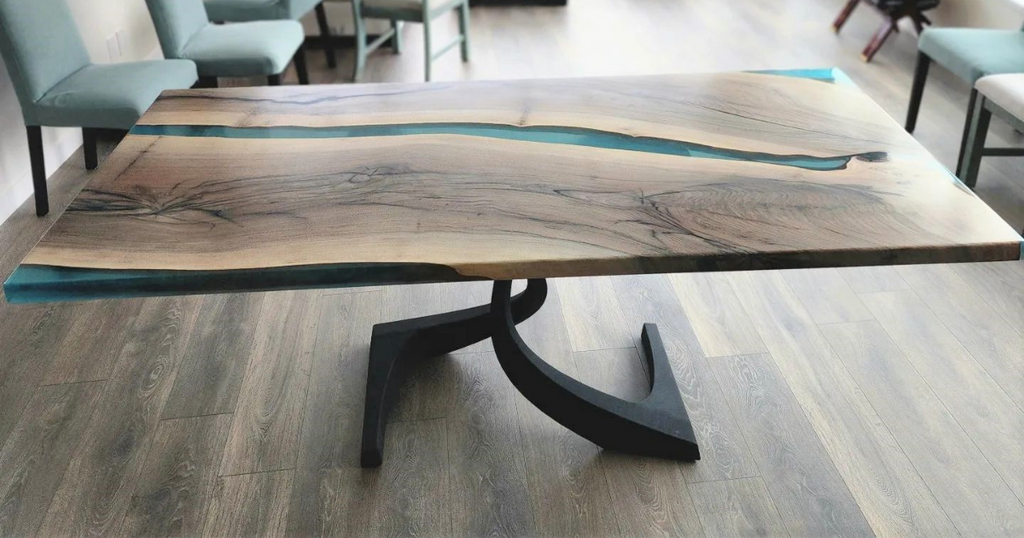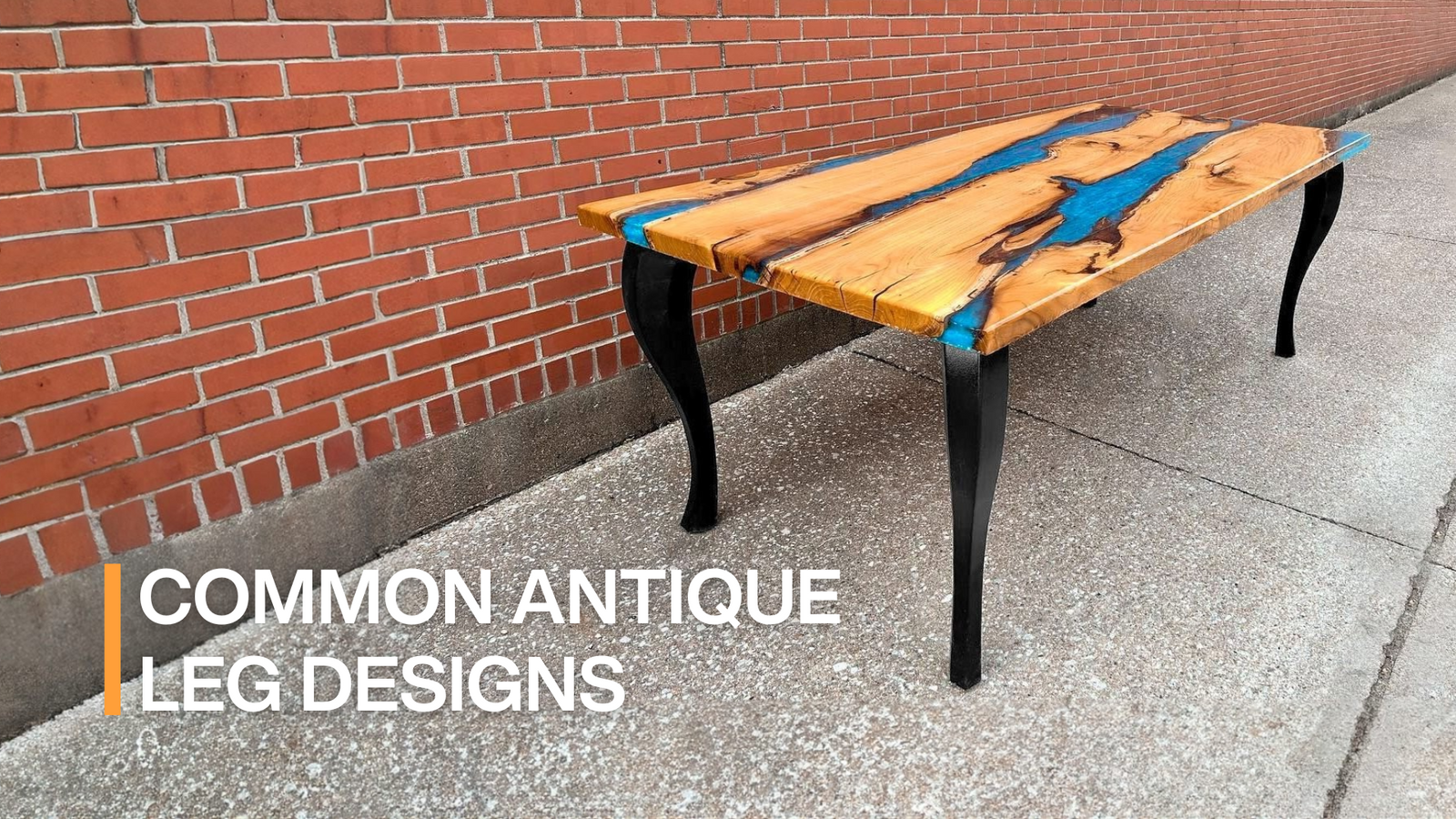If you are a lover of classic, timeless style, you definitely cannot miss the identification antique furniture leg styles. They have many types, symbolizing different historical and cultural periods. This guide will discuss the primary leg styles present in vintage furniture and provide tips for recognizing them.
Understanding the Significance of Furniture Legs
Why do so many people love classic table legs? Here are some key benefits of using antique furniture legs:
- Classic beauty: Antique furniture legs offer timeless luxury and sophisticated design. They carry the aesthetic value of bygone eras, increasing the value of the item.
- Outstanding design and quality: Antique legs are often made from durable, high-quality woods such as mahogany, oak, and walnut. They were handcrafted by artisans of that era. Detailed carvings reflect the exceptional skill that is undeniable! It's really, really cool!
- Historical and cultural value: These legs are like a valuable old item, allowing you to connect with the past and understand and feel the context and culture of the era in the most authentic way.
There are many styles and types of antique table legs. Antique furniture pieces often feature different types of leg designs like trumpet legs, cabriole legs, turned legs, and others. In addition, searching decorative features such as fluting, and carving can offer valuable information about the style and period of the item.

Identifying Common Antique Furniture Leg Styles
Cabriole Legs
Cabriole legs are a piece of furniture shaped in two curves and they were popular in Europe. These elegant table styles are also used in Chinese due to their outstanding and timeless touch. These types of legs are still popular nowadays because they’re quite sturdy and easily matched to any interior decor.

Sturdy legs are important in both functional and aesthetic aspects of your interior decor
Credit: Flowyline Design
Order now: 502 Priya Metal Table Legs
Straight Legs

Order now: 501 Snello Metal Table Legs
Straight legs are the modest leg design that can be found in multiple forms of furniture. American furniture designs frequently feature these legs due to their timeless and easily-mixed designs.
Tapered Legs

Tapered legs feature a sleek and gradually narrowing, suitable for minimalist style
Credit: Wikimedia Commons
The leg style of tapered legs is commonly observed in antique furniture pieces, featuring a sleek and gradual narrowing. They became popular during the Mid-Century Modern period, these legs were also found in the Arts and Crafts and Art Deco movements. Tapered legs designs can demonstrate the shifting s and trends of various time periods. Moreover, tapered legs are often used in artistitic interior decor due to their elegance.
Turned Legs

Turned legs originated in Colonial are common leg styles that spread out the elegant and antique aesthetic
Credit: Alamy
A common leg style found in antique furniture is turned legs. Spiral or fluted designs are achieved by turning a piece of wood on a lathe in order to form these legs. The fascination with turned legs originated in Colonial, with different time frames showcasing their own interpretations of this leg design.
Trumpet Legs

Trumpet legs are shaped like a trumpet, have a ball pattern, and usually gradually get smaller towards the point touching the floor. It was often used as a console table and became popular in the late 17th and early 18th centuries, during the Baroque era in England. Its main purpose is to decorate and create a bold highlight for the space.
Spider Legs

The reason it is called "spider legs" is because the shape of three or four legs is slim, graceful, and bunched at the point to look like a spider. This table leg was popular in the late 18th and early 19th centuries. They are often used to make tea tables, hold light items or decorations, and are convenient for moving.
Fluted Legs

Fluted legs are inspired by ancient Greek columns, giving them a luxurious look
Credit: Alamy
Fluted legs have a straight shape, often with a concave groove running along the leg. They are inspired by ancient Greek columns, giving them a luxurious and sophisticated look. Fluted legs reached their peak during the Neoclassical period and were often used for console tables and side tables. The fluted leg is often made from mahogany, and it can be gilded or painted to match the style it reflects.
Resources and Techniques for Identification
You need to identify antique table legs by searching and examining the construction and materials of the piece. The examination of furniture joinery, construction techniques, and materials can bring important insights for you into its authenticity and age.
The research and selection process is an exciting journey. Let's start by reading articles like this or search for “how to date antique furniture by feet” to get an overview. To deeply understand the history, brands, and value of specific antique table leg styles, you can refer to the website Valuable Antique Detector. This website offers a variety of styles, with detailed images and descriptions.
This is just research! To ensure you buy genuine antique table legs, you need to buy from a reputable place, compare prices on the market, and ask a professional appraiser to check for you.
FAQs - Antique Furniture Leg Styles
How Can I Identify the Leg Style of My Antique Furniture?
To identify the leg style, examine the shape, size, and ornamentation of the legs. Compare them to reference materials, books, or online resources that provide visual guides to antique furniture legs styles.
What Time Periods Do These Leg Styles Represent?
Different leg styles were popular during specific time periods. For instance, cabriole legs with ball-and-claw feet are often associated with the Queen Anne and Chippendale periods (early 18th century), while straight legs with tapered feet gained popularity during the Art Deco era (1920s-1930s).
How Can I Determine the Age of My Antique Furniture Based on Its Leg Style?
While leg styles provide clues to the approximate age of the furniture, it's important to note that styles can sometimes be reproduced in later periods. Consult with experts or appraisers who can consider other factors like construction techniques, materials, and hardware to accurately date the piece.
Are There Regional Variations in Antique Furniture Leg Styles?
Yes, different regions and cultures often developed their unique leg styles. For instance, the cabriole legs of French furniture may have subtle differences compared to English cabriole legs. Researching regional design trends can help you identify these variations.
What Should I Consider When Restoring Antique Furniture Legs?
It's crucial to preserve the original design and character. Be careful to research the information related to the table leg you want to restore and consult with professional furniture restorers who can advise on appropriate techniques, materials, and finishes to ensure the authenticity and value of the piece are maintained.
Can I Mix and Match Different Leg Styles on Antique Furniture?
Mixing and matching leg styles increases creativity, but it also has potential risks. Are there any contradictions between cultures and their national histories? Equip yourself with knowledge and consider it carefully to avoid reducing its internal and external value!
How Do I Care for Antique Furniture Legs?
Maybe it's hard to clean every day, especially legs with many small, intricate details. But try to clean regularly and avoid direct sunlight and extreme temperatures. Next, be careful of sharp iron objects that can scratch and lose aesthetics. Finally, use appropriate furniture polishes (optional).
Where Can I Find Resources for Learning More About Antique Furniture Leg Styles?
You can find books, online articles, museum exhibitions, and antique furniture forums that delve into the details of various leg styles. Visiting antique shops, auctions, and consulting with furniture experts are also excellent ways to enhance your knowledge.
Identification antique furniture leg styles is an interesting task for collectors, historians, and enthusiasts alike. By doing deep research and paying attention to key design elements, materials used, and historical context, you can gain valuable insights into the age and origin of a table's legs. If you want to mix a little modernity into these antique table legs, refer to our website and share this article with your friends to begin choosing the most suitable table legs.

